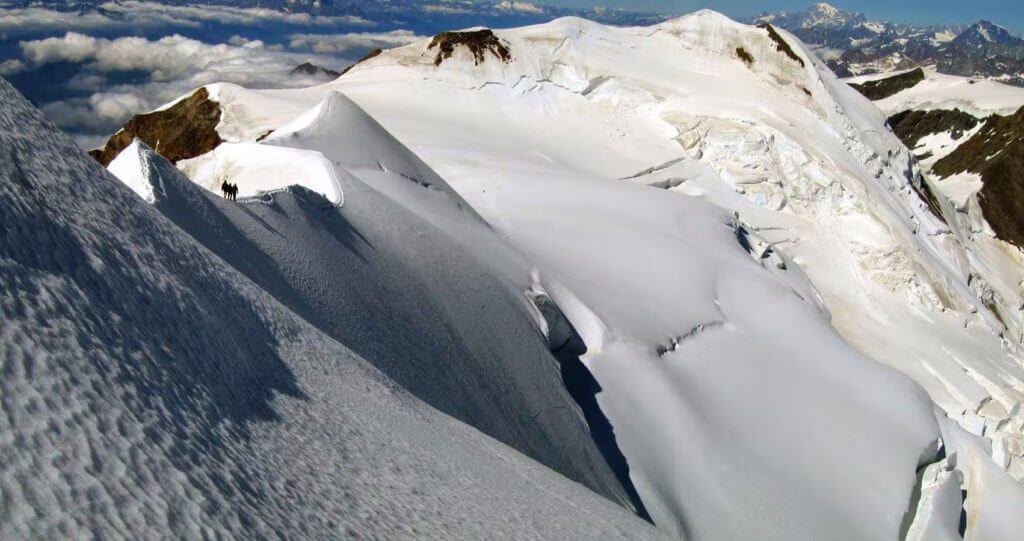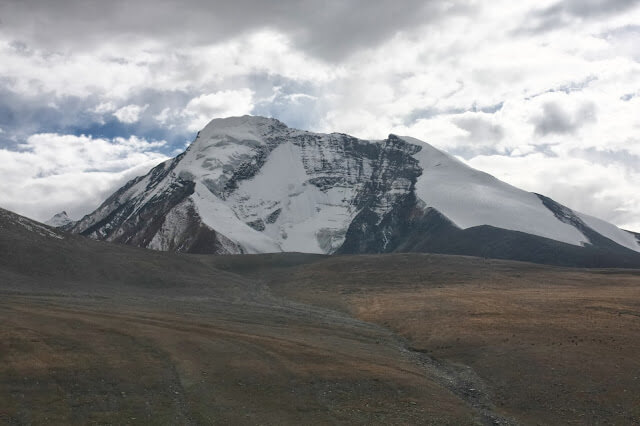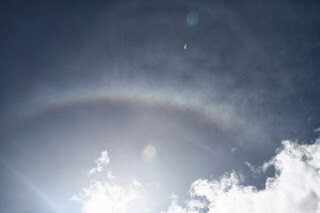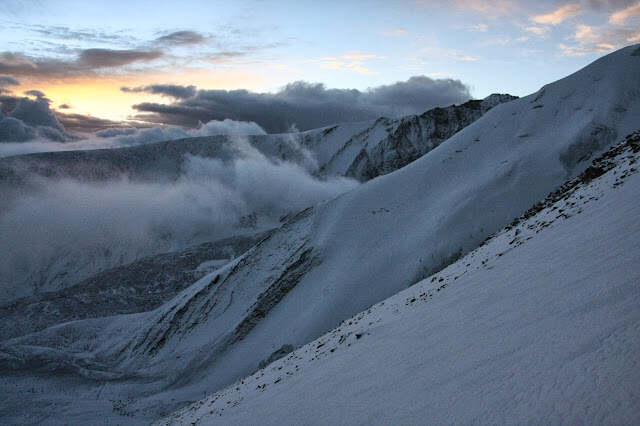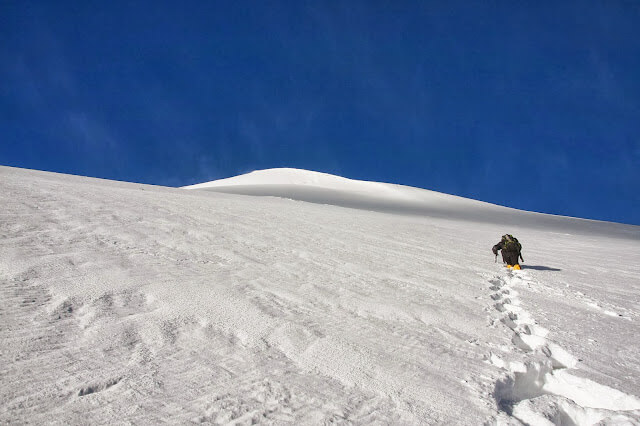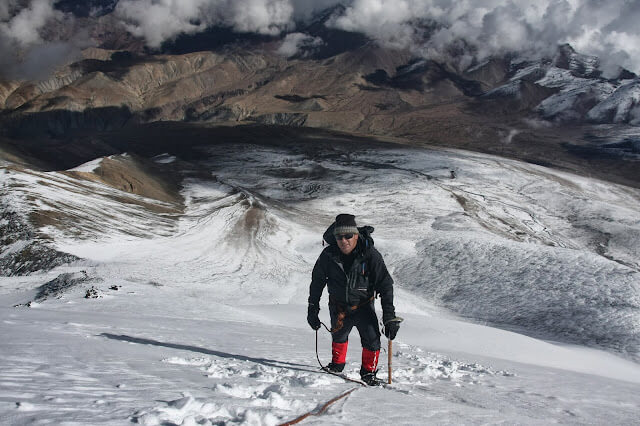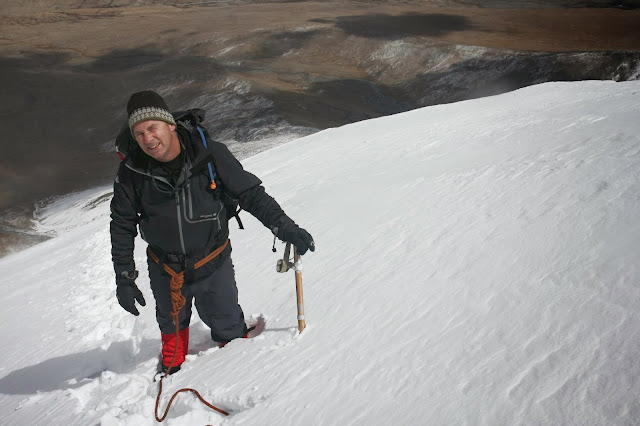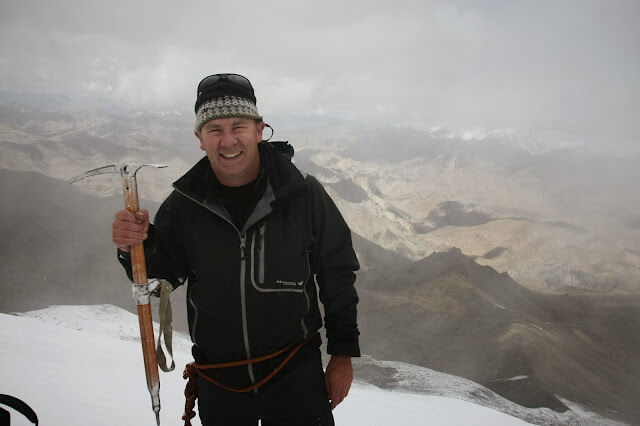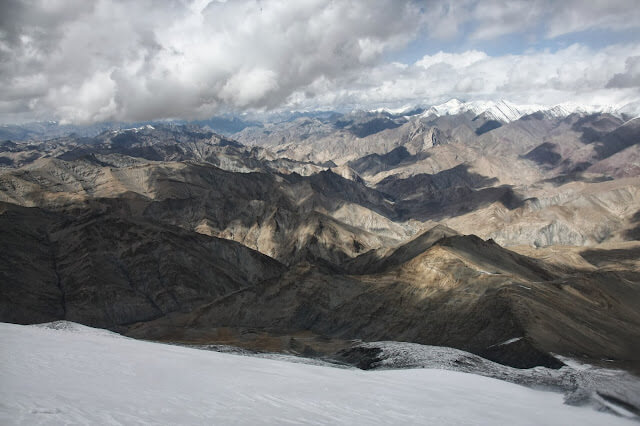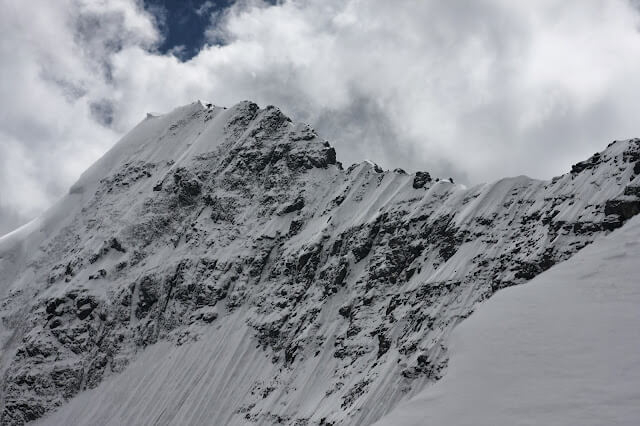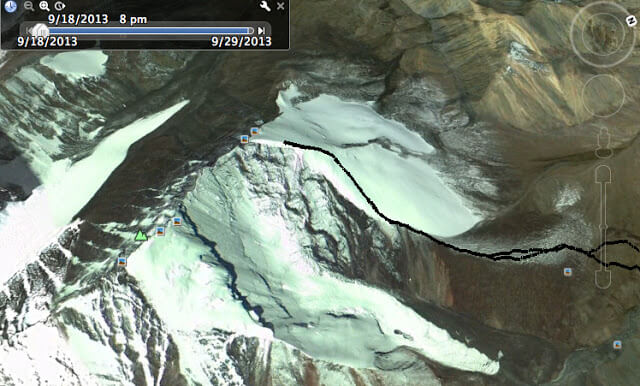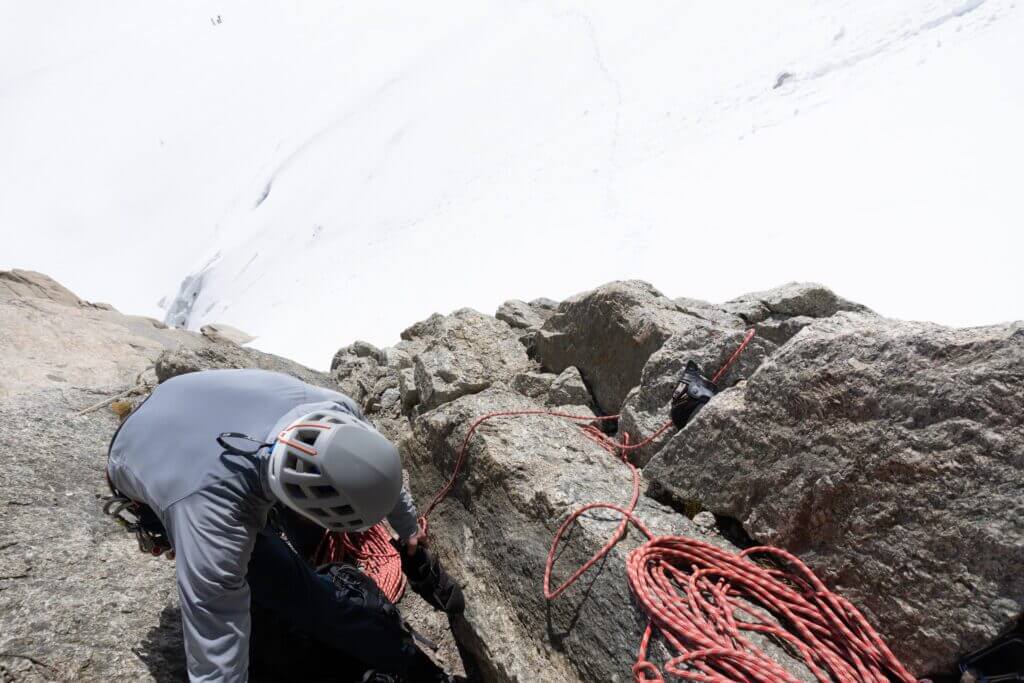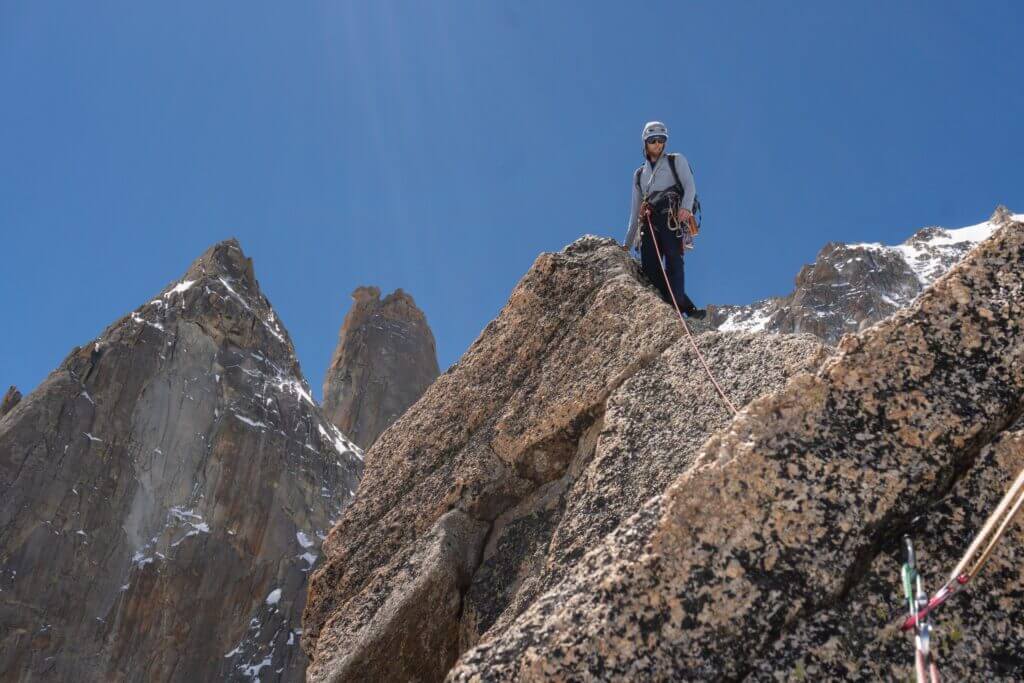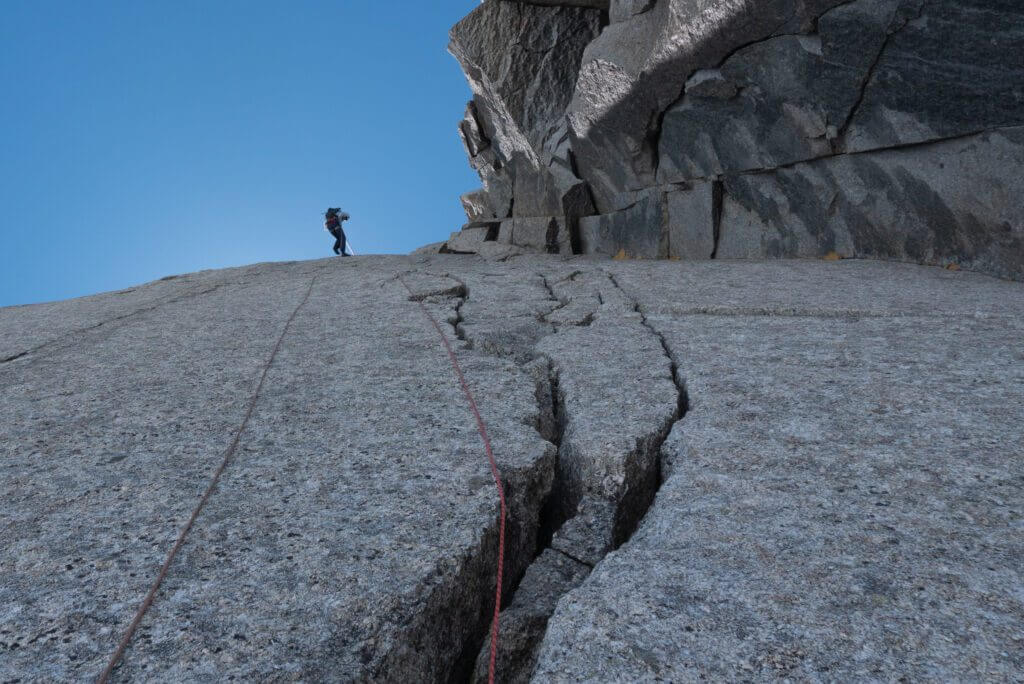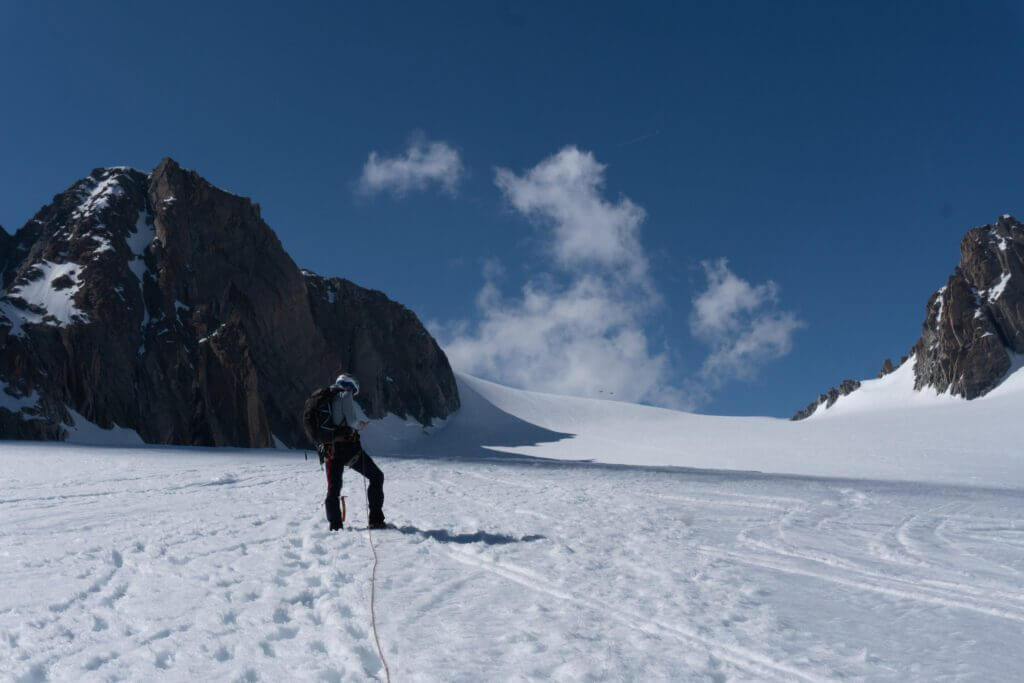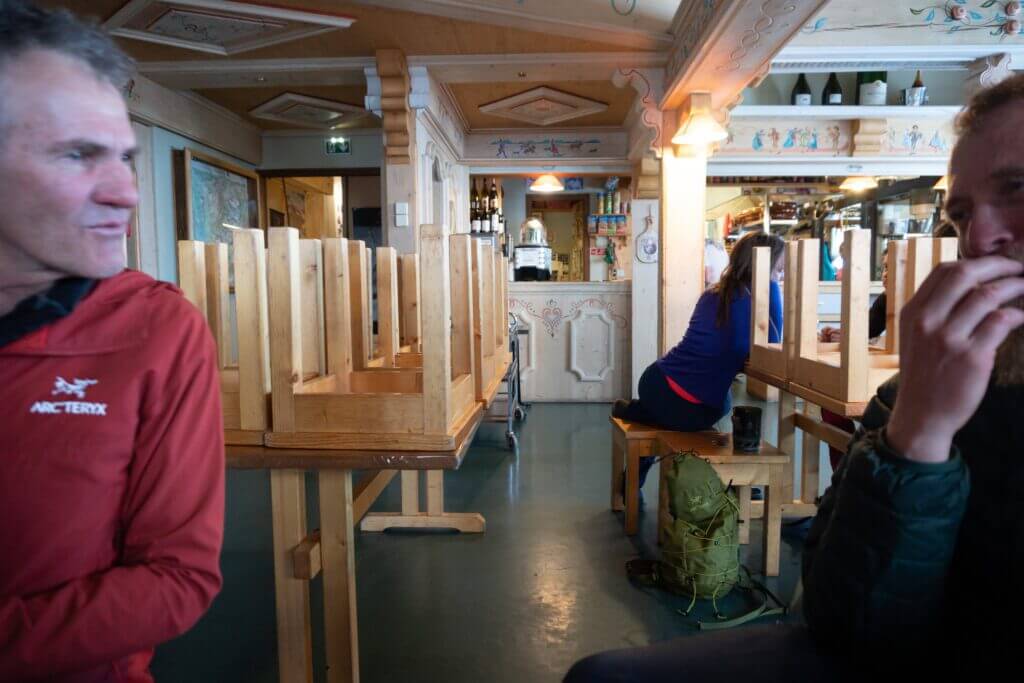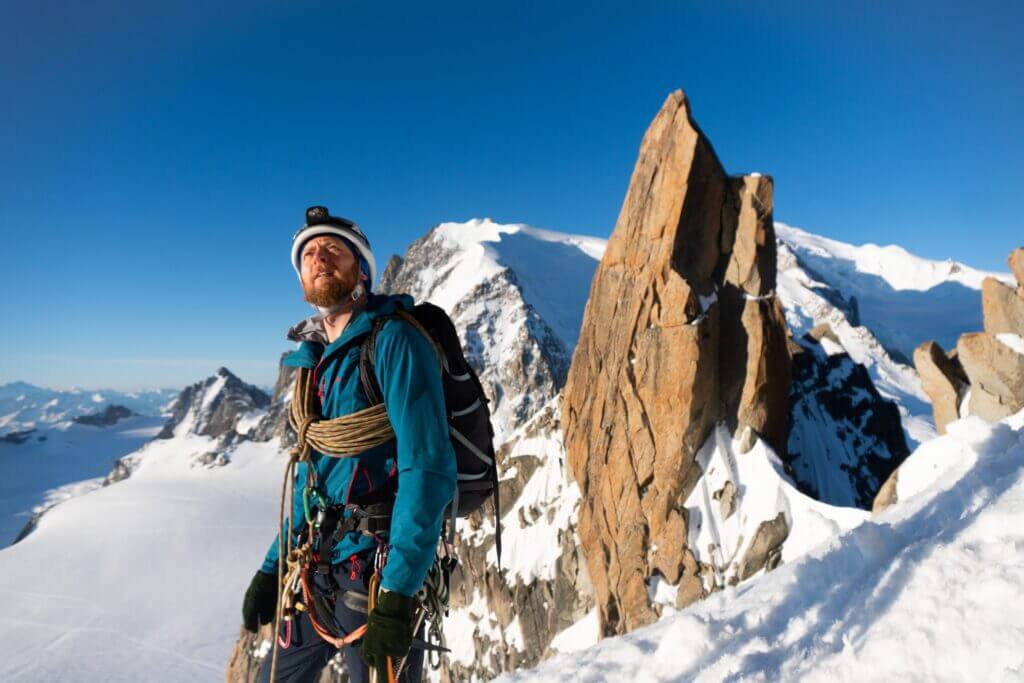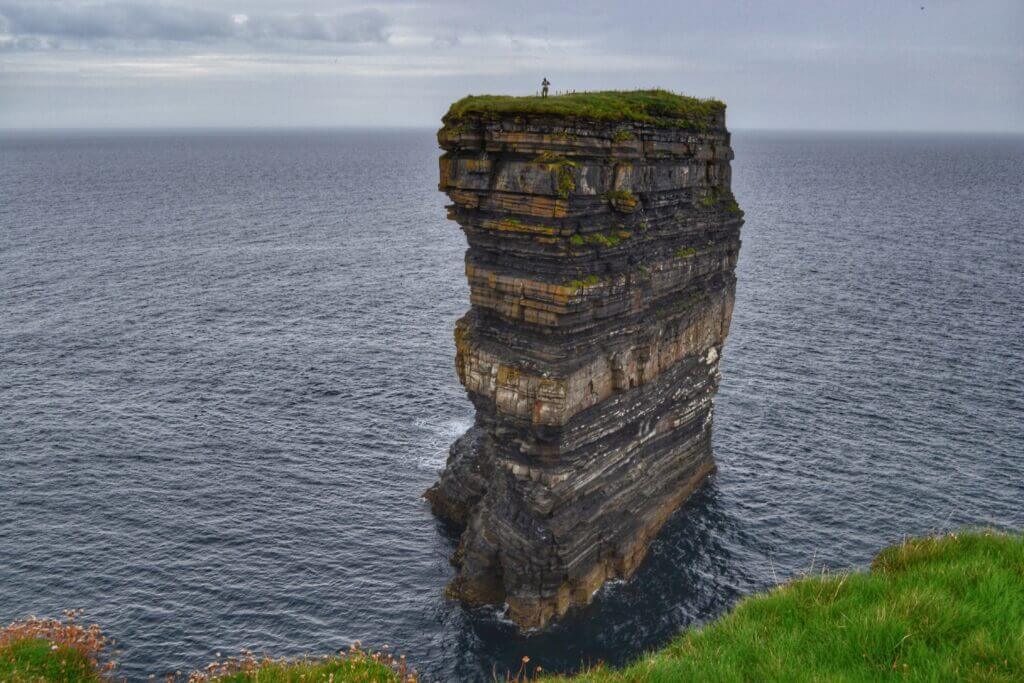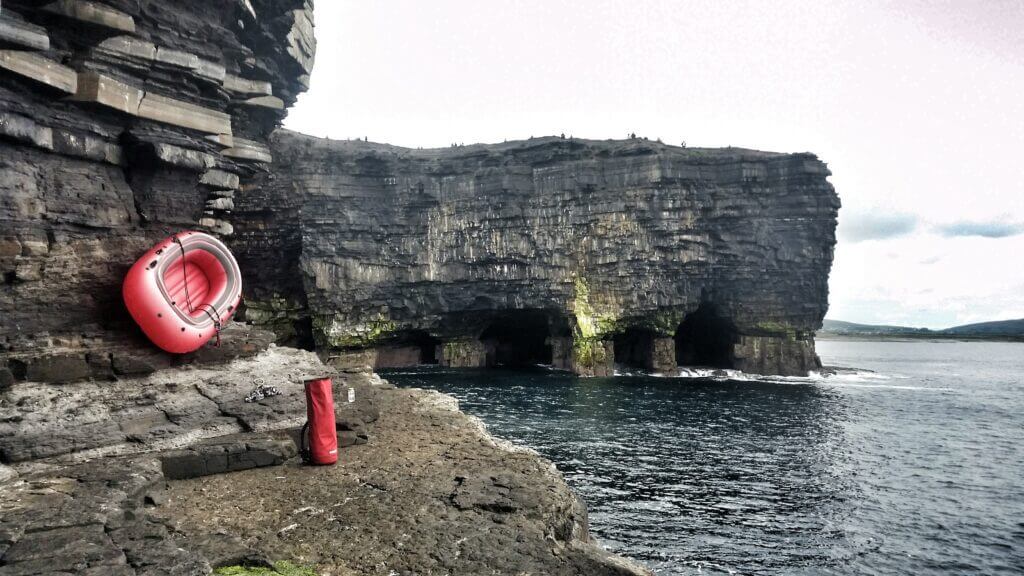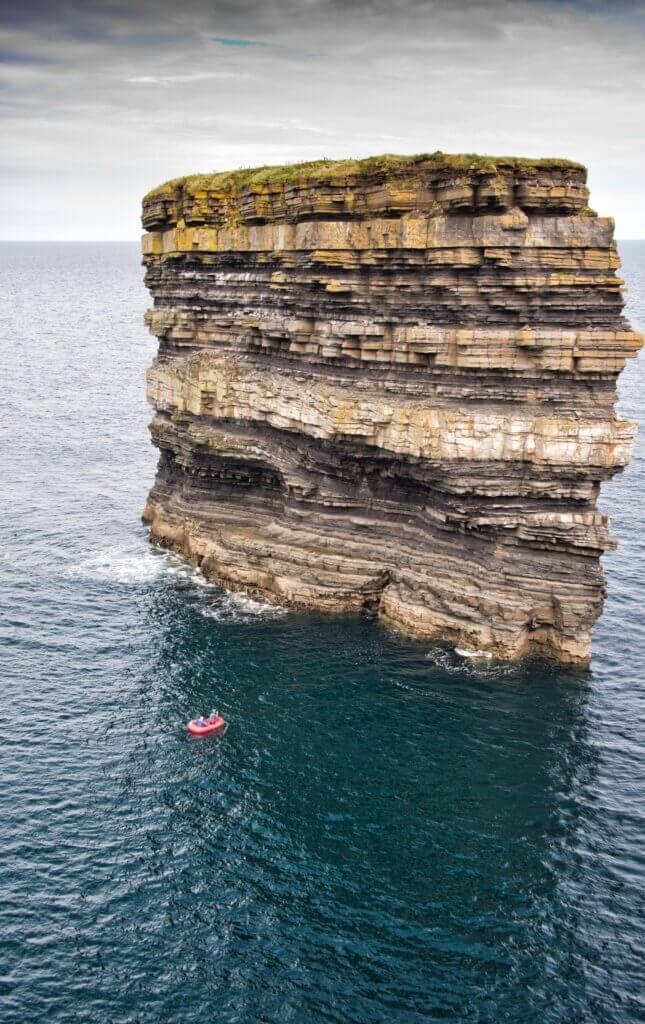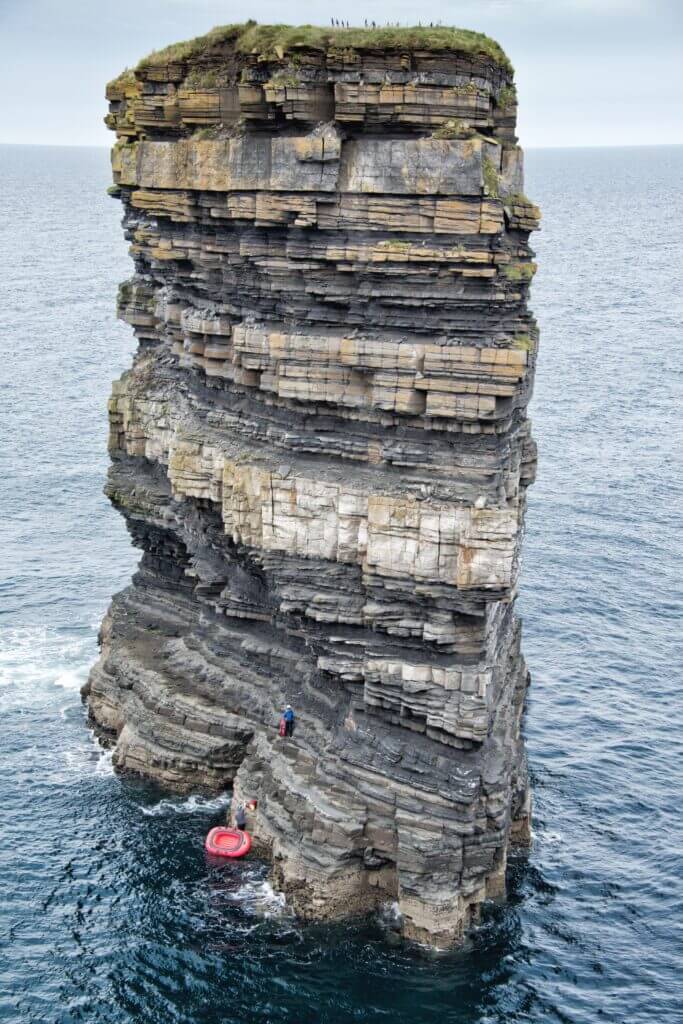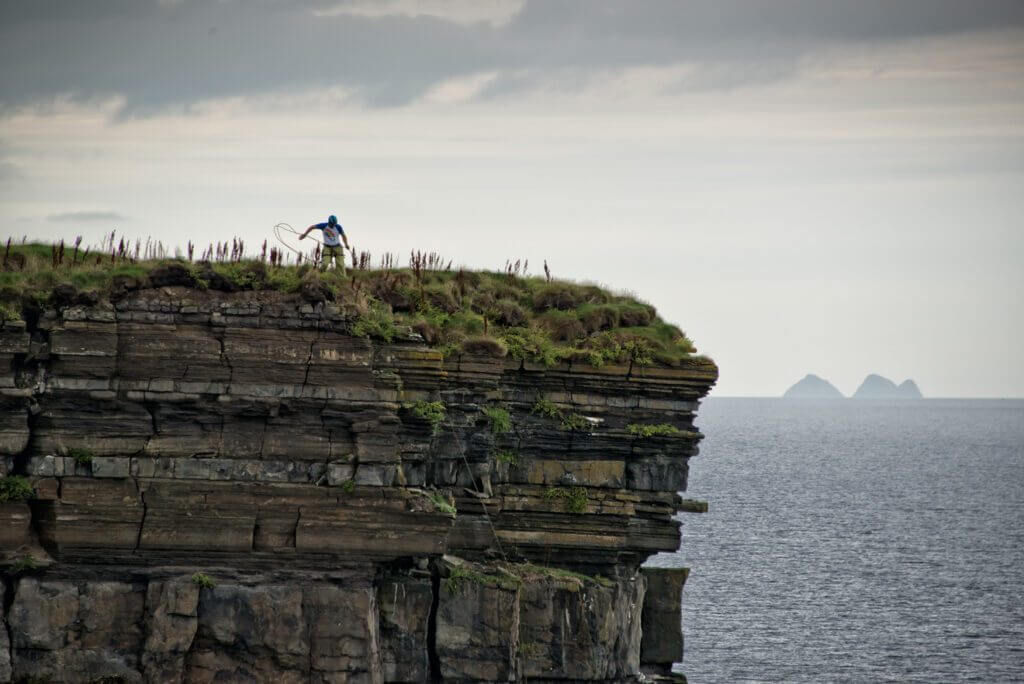I attempted the Lyskamm Traverse, a classic traverse in the Alps, three times before. The first time was in mid-July of 2008 with Anna and Carlo, two friends from northern Italy with whom I have shared several great skiing tours in the previous years.
Lyskamm traverse – first attempt
For the summer of 2008, we decided to join for some outings in the western Alps. The first plan was five days crossing in the Monte Rosa group, including Lyskamm, Castore, Polluce and the Breithorn traverse. It was quite a rough start for me coming from Rome, but not a problem for them living close to the mountains and always fit, acclimatized and ready to go high. The main obstacles of this crossing are Lyskamm and Breithorn.
That year had been unusually cold in early summer, with significant snowfalls in June and early July, so we were pretty uncertain that we would be able to traverse Lyskamm and Breithorn by their summit ridges, but both could be bypassed in case of bad conditions or weather, by lower and more accessible routes. We arrived at Rifugio Mantova with a good 20cm of fresh snow on the ground from the previous night. Although I had never been there, the Lyskamm south face looked wintery to me. Anyway, the plan for the next day was easy, go to Punta Gnifetti or Zumstein and back to the hut, nothing more than a long acclimatizing walk on the glacier but providing a close view of the Lyskamm east ridge, the start of the Lyskamm traverse and our program for the next day.
On the way to Lysjoch, a team of two climbers from Spain turned left toward the east ridge, and a group of three was already starting up the ridge. At least from what we could see, the ridge was loaded with fresh snow, and there was no evidence of a track. As we proceeded toward Punta Gnifetti, we watched the attempts of the two teams and their quick retreat before the levelled section of the ridge, the first tricky part of the traverse.
The ridges of Lyskamm have a bad enough reputation for attempting them unless they are in good conditions, at least for us. Hence, it was an easy decision to settle for the easy alternative to the traverse; the following day, we were going to take the Naso route to the next hut. We then completed the crossing to Plateau Rosa with Castore, Polluce and a piece of the Breithorn traverse on virgin snow (the problem was the weather). Five fine days in the mountains, but the main goal remained on the wish list for another time.
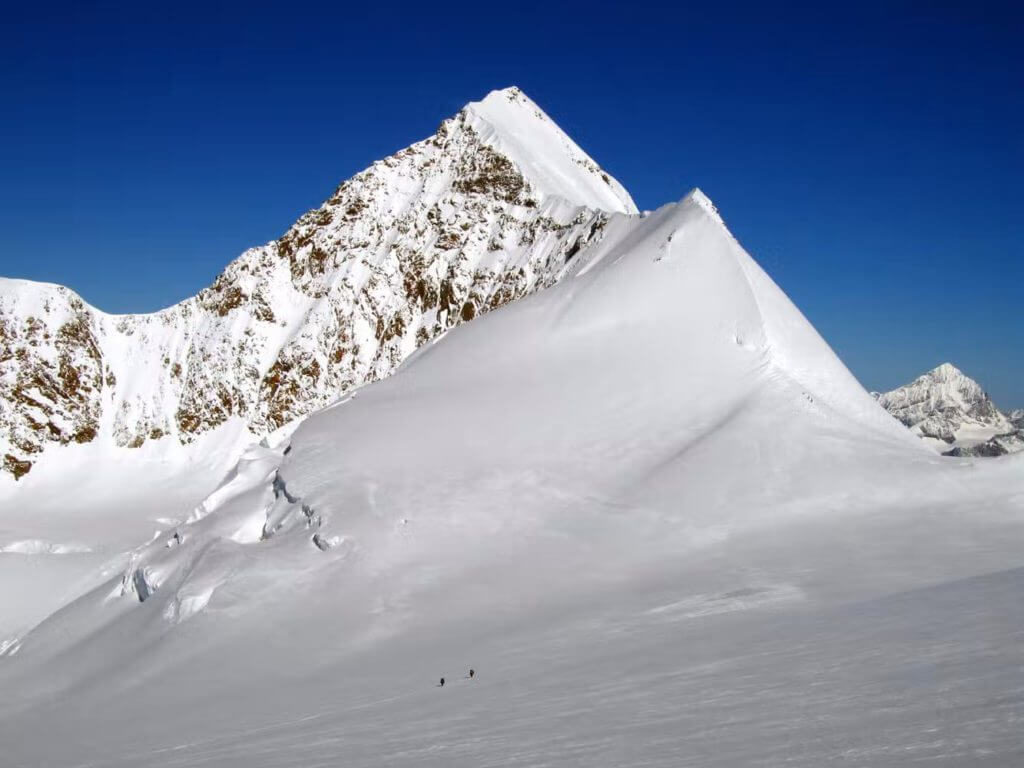
Lyskamm traverse – attempts 2 and 3
The following year the problem was different. I returned to Valle d’Aosta, but Anna and Carlo could not join, so I had to rely on other friends spending their vacation in the area and did some excellent climbing with them, but Lyskamm was not in their plans. One day hiking alone in the Gran Paradiso, I met a couple of residents in the area and started talking. It turned out that they also had the Lyskamm traverse in mind, so we exchanged telephone numbers. A few days later, she called, and we set an appointment. This time was going to be a blind date, with all the associated uncertainties, and the idea of roping up with unknowns on a narrow snow ridge was problematic. But they lived in a valley in the area and knew those mountains well, so I assumed they were up to it.
Moreover, it was not the first time I was going to join someone I didn’t know. It’s either that or no outing sometime. To cut a long story short, the weather was fine, the ridge in top condition, but, after the first section of the east ridge, when the ridge becomes narrow and exposed, she pretends to continue the route belaying! So I pretend that we turn around and go back. The end of the second attempt, but I was too upset to wait another year for the third.
On the way back, the route pass near the Balmenhorn, an outcrop in the middle of the glacier with an unguarded hut perched on its top, bivacco Giordano. While walking down, I decided to untie from the rope, stay at the hut for the night and try the next day again; maybe someone would arrive at the hut for the Lyskamm traverse, and I could join or attempt the traverse alone. There should not be technical problems on the traverse, and the advantage of being in a team with unknowns over being alone was not noticeable. So I said goodbye to my first date and prepared for the second one.
Quite late in the afternoon, two guys arrived at the already overcrowded hut; nine people were there with six bunks to sleep. When I realized they were headed for the Lyskamm traverse, I quit trying to persuade them to return to the Gnifetti hut. Guglielmo and his friend accepted my proposal to join for the traverse the next day, although they were also suspicious about me and suggested proceeding un-roped, maybe.
The night was awful, two more climbers arrived, and thirteen people had to share the bunks and the floor. The wake-up call was welcome, but outside was quite windy. We quickly worked our way to the start of the ridge, and by the time we got there, the summit of Lyskamm was already choked in clouds. When we reached the point where I turned back the previous day and could see the other side, a thick layer of dark clouds was proceeding toward us, pushed by a relatively strong northern wind. We watched the weather deteriorate for a while, uncertain about what to do, then after an hour or so, we all agreed to go back.
The morale was low, but given the early time, Guglielmo and I decided to head for the Parrot, an easy target nearby; Guglielmo’s friend returned toward the hut, carrying the rope we did not need. Halfway to the Parrot, the weather improved, and soon the Lyskamm was free of clouds. For a moment, we considered returning to the east ridge, but it was late, and we didn’t have a rope, so we reached the Parrot and returned, talking about our past experiences and planning the next attempt to Lyskamm.
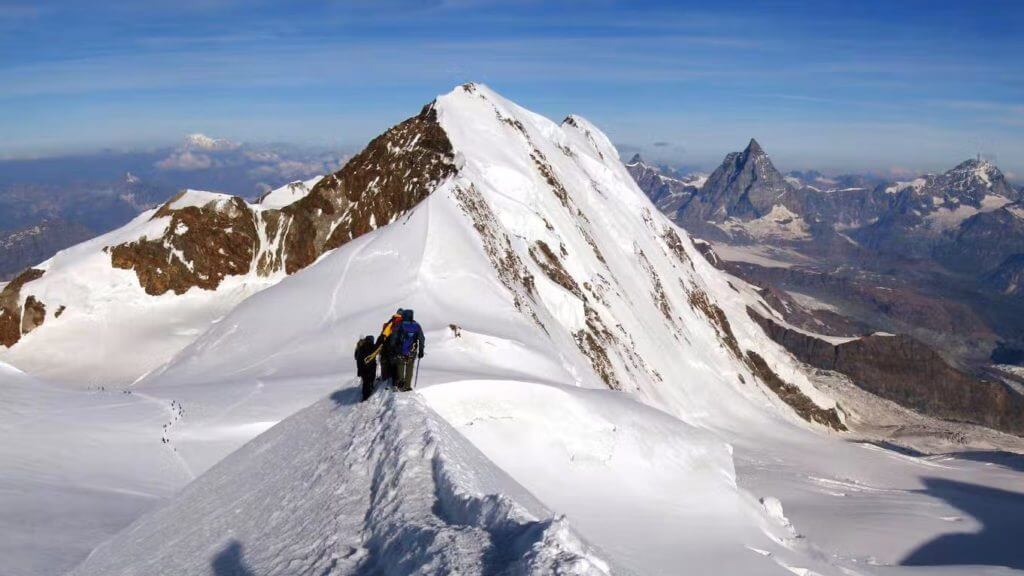
Finally there
As usual, I start planning well before the summer season begins, and as usual, I plan to spend some time in the western Alps for the summer of 2010. Guglielmo is out with an injured tendon. By early July, Anna and Carlo are just recovering from an intense skiing season (90000m logged), so they are not eager to commit themselves. Giulio, a friend with whom I often go skiing in the central Apennines, is keen to join, so by mid-July, we are ready to go. The weather is very hot, a north-African heat wave is extending over Italy, and the freezing level in the Alps is always well above 4000m. For the first couple of outings, we avoided mixed snow and climbed nice routes in the Gran Paradiso e Mont Blanc groups, waiting for cooler weather.
Meanwhile, I keep calling Carlo to persuade him that conditions are not so bad after all. He rejects my advances and tells me about the horrible conditions and news he reads on the internet and climbing forums. The forecast improves, and the temperature should drop slightly in a couple of days, so we call the hut and make a reservation for the four of us. Rifugio Mantova has been recently renovated and is a very comfortable starting point for this traverse; furthermore, with the new cableway, one can reach the hut in 45 minutes. Shameful luxuries of alpine climbing. We arrive at the hut in time for supper and go to bed.
At 3 o’clock in the morning, we are the first group to wake up; we swallow something, rope up, and, after 45 minutes, we are on our way on the easy slopes of the Lys glacier. The snow is frozen hard, so far, so good, and after a couple of hours, we are starting up the east ridge of Lyskamm. There is a well-beaten track on the ridge granting an easy and quick progression, and I almost regret that.
I remember the exhilaration of tracking one or two rope lengths on the ridge of east Breithorn in deep virgin snow two years before; at every step, you had to guess whether the snow would stay or slide down, guess the distance from the cornice, and each step is a great achievement. This time it will be much easier. I said “almost regret” because with a 4Km narrow ridge to traverse, always above 4000m, there is nothing to regret about a well-beaten track. It is the fourth time I have started up this ridge, and everything looks good this time: weather, conditions and friends.
After a steep section of 150m, the east ridge levels off and becomes narrow, and the void on the north side unveils, a void that will be a companion for the next four hours or so. This traverse has few technical problems, but it is about controlling your steps, movements and focus over that void. Some short sections downhill are exciting from this point of view. Then the ridge rises for another 150m, and we get to the East summit quite soon.

The deep view of the ridge below is one of those views for which we go to the mountains. The weather is fine, and everything looks good, but I don’t remember stopping even a minute on the summit. It is the first time on this route, and all we know is that we still have a long way to go. After an airy summit ridge, the descent to the saddle between the east and west Lyskamm is the only section where we can relax; I can walk looking at the great scene around me instead of the three meters of snow in front of my feet.
At the saddle, we encounter the first team from the opposite direction, an odd choice for this crossing; in fact, most people choose to traverse from east to west. The next section of the ridge to the west summit is steep and narrow again, and I switch focus to the three meters in front. After a false summit, there is a small notch and the terrain changes, with outcrops and short snow ridges connecting them. Time to scratch some rocks.

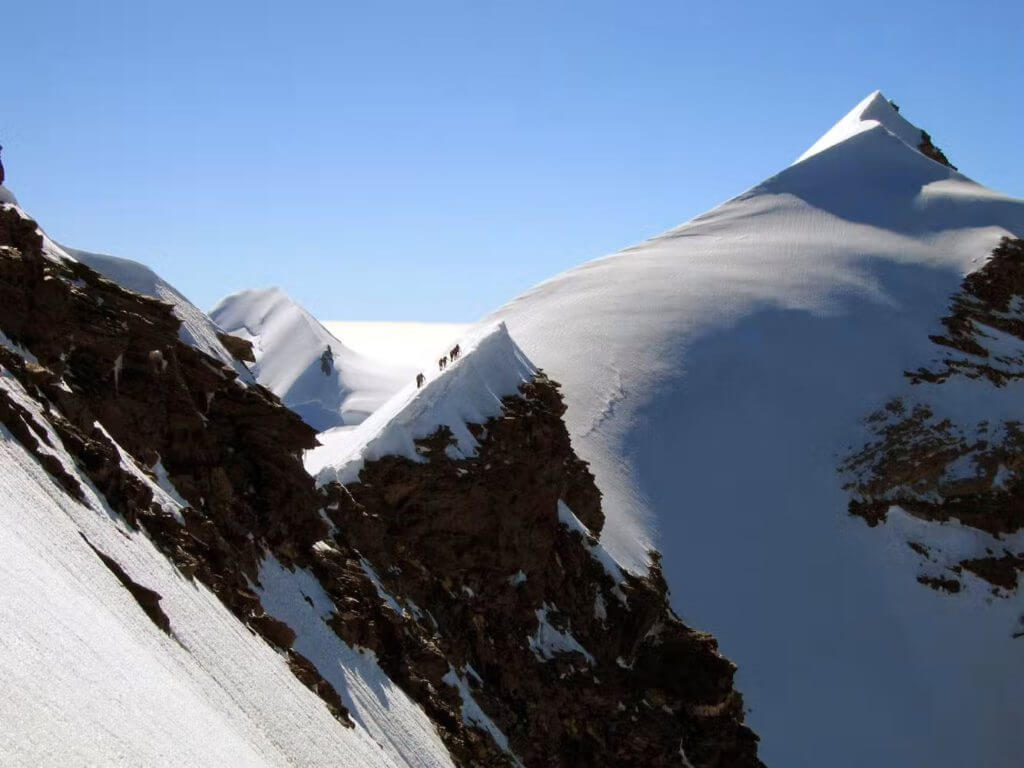
Then, in the middle of a rocky section, something happened just ahead of us, I heard yells and calls for help, but I couldn’t see what happened. A vertical wall follows a rock step – maybe 4 or 5 meters high to downclimb, landing on a narrow snow ridge. When we are at the top of this step, we realize that a team of two just fell down the north face, about 900m high at that point. A team, led by a mountain guide, is on the ridge looking down, just faint marks on the snow slope. Silence, nothing to say, nothing to do.
Those who realize what just happened are shocked; other parties, unaware, complain about the forced stop and want to bypass. In a few minutes, a helicopter arrives and hovers in front of us; the guide points to the slope below and the helicopter dives. Now it’s our turn to downclimb the same step where the team probably fell, most likely a false step downclimbing the wall. It is the first time I am so close to something like this, it is not easy, but we have to proceed. There is no way to make a decent belay, so I run the rope behind a small slab and let Giulio down; then it’s my turn, Giulio precariously belaying me on the ice axe in the snow.
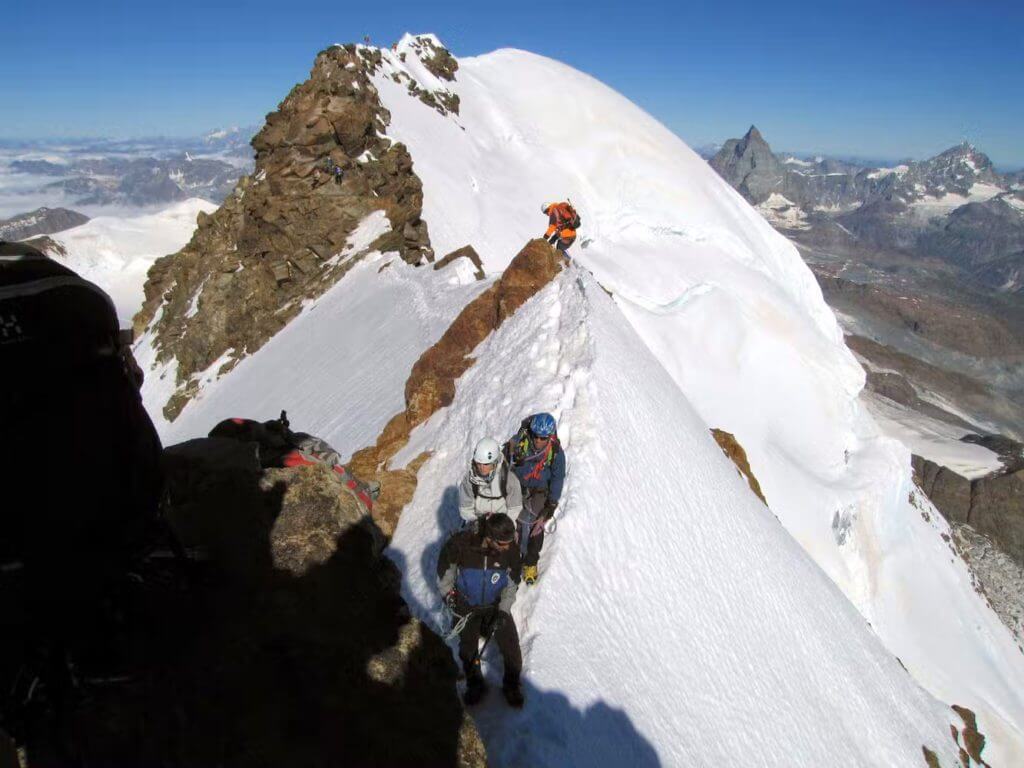
When we are down, I realize the outcrop and the downclimb could be easily avoided on the south side. We breathe and want to move away from that spot as quickly as possible. While we see the helicopter flying to Zermatt, we climb some easy rocks and reach the west summit. We descend a steep slope from the west summit, maybe 45 degrees, with some ice surfacing. Then another narrow and esthetic ridge, and we finally reach Felikjoch; from here, it is an easy walk to Quintino Sella hut.
At the hut, at about noon, we meet Carlo and Anna, they were just ahead of the team that fell, and we were just behind, but none of us could see the fall. We don’t talk much about it; we know well that a fall can happen, but this time is different. Even though I always felt secure on the traverse, I perceive that it could have happened to me. This time happened to someone else, but I have to admit to myself that it is just statistics at work; there is no reason to assume that I won’t make a false step sometime. So the traverse was finally accomplished, but an unpleasant bitter feeling will be attached to it.
